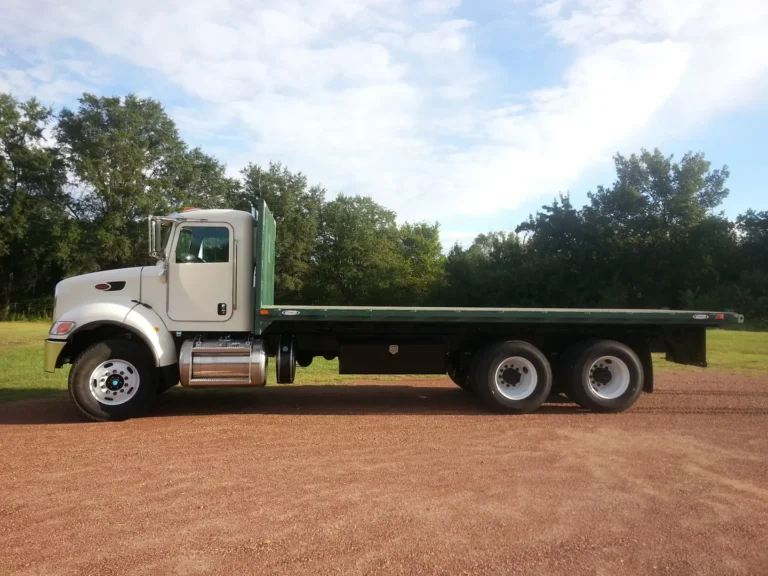Silverado Extended Cab Cap Fits What Other Year Trucks? A Comprehensive Guide to Truck Cap Compatibility
Silverado Extended Cab Cap Fits What Other Year Trucks? A Comprehensive Guide to Truck Cap Compatibility cars.truckstrend.com
A truck cap, often referred to as a camper shell or topper, is an invaluable accessory for any pickup owner. It transforms your open truck bed into a secure, weather-protected, and often more versatile cargo area. Whether you’re a tradesperson needing to protect tools, an adventurer seeking a makeshift sleeping quarter, or simply someone looking for secure storage, a truck cap can significantly enhance your Silverado’s utility.
However, the world of truck cap fitment is far from a "one-size-fits-all" scenario. Owners of Chevrolet Silverado Extended Cab trucks frequently wonder: "Can a cap from one year Silverado Extended Cab fit another? What about a GMC Sierra? Or even a Ford F-150?" The answer, while seemingly simple, involves a nuanced understanding of truck dimensions, design changes across generations, and the subtle art of precise measurement. This comprehensive guide will demystify the complexities of Silverado Extended Cab cap compatibility, helping you make an informed decision and avoid costly mistakes.
Silverado Extended Cab Cap Fits What Other Year Trucks? A Comprehensive Guide to Truck Cap Compatibility
Understanding Truck Cap Fitment Basics
Before diving into specific models and years, it’s crucial to grasp the fundamental dimensions that dictate truck cap fitment. A perfectly fitting cap isn’t just about aesthetics; it’s about providing a weather-tight seal, preventing cargo theft, and ensuring safety on the road.
The primary dimensions that must align between a truck bed and a cap are:
- Bed Length: Measured from the inside of the bulkhead (the wall closest to the cab) to the inside of the tailgate. This is the most critical dimension. Extended Cab Silverados typically come with a standard bed length (often around 6.5 feet or 78-79 inches), though some variations exist.
- Bed Width: Measured from the inside of one bed rail to the other. Truck bed widths can vary significantly between manufacturers and even generations of the same truck.
- Cab Contour/Profile: This refers to the shape of the truck’s rear cab window and roofline where the cap meets the cab. Caps are designed to closely match this contour for an aerodynamic fit and to prevent water intrusion. A cap designed for a flat-back cab will not sit flush on a truck with a sloped rear window, and vice-versa.
- Tailgate Design: The shape and angle of the tailgate can affect how the rear of the cap seals. Some caps are designed to overlap the tailgate slightly for a tighter seal.

Even a difference of an inch or two in any of these dimensions can result in an improper fit, leading to gaps, leaks, poor aesthetics, or even an inability to install the cap safely.
The Generations of Chevrolet Silverado Extended Cab and Their Bed Dimensions
Chevrolet Silverado and its GMC Sierra counterpart have undergone several significant design changes over the years, leading to distinct "generations." Each generation typically features different body styles, cab profiles, and bed dimensions, which are critical for cap compatibility. For Extended Cab models, the most common bed length is the standard (often called "short") bed, which is approximately 6.5 feet (78-79 inches).
1. First Generation (GMT800): 1999-2006 (and 2007 Classic)
- Years: 1999-2006 (and the 2007 "Classic" model, which continued the GMT800 design for a transitional period).
- Extended Cab Bed Length: Primarily 6.5-foot (approx. 78 inches). Some rarer 8-foot long bed extended cabs exist but are less common.
- Cab Profile: Generally a more upright, less sloped rear cab design compared to later generations.
- Compatibility within this generation: Caps designed for a 1999 Silverado Extended Cab (6.5 ft bed) will generally fit any 1999-2006 Silverado or GMC Sierra Extended Cab (6.5 ft bed) within this generation, including the 2007 Classic. Minor differences in bed rail caps or tailgate design might exist but are usually negligible for cap fitment.
2. Second Generation (GMT900): 2007-2013
- Years: 2007-2013 (excluding the 2007 Classic).
- Extended Cab Bed Length: Primarily 6.5-foot (approx. 78 inches).
- Cab Profile: This generation introduced a more aerodynamic, slightly more sloped windshield and rear cab design compared to the GMT800. The rear cab wall often has a slight curve or different angle.
- Compatibility within this generation: Caps from any 2007-2013 Silverado or GMC Sierra Extended Cab (6.5 ft bed) will typically fit other models within this specific generation. They will generally not fit GMT800 models due to the cab profile and subtle bed dimension changes.
3. Third Generation (K2XX): 2014-2018
- Years: 2014-2018.
- Extended Cab Bed Length: Primarily 6.5-foot (approx. 78 inches). Note that Chevrolet began referring to the Extended Cab as "Double Cab" in some configurations during this period, but the bed dimensions for this cab style remained consistent.
- Cab Profile: Further refinements to the cab design, often featuring a slightly different rear window angle and cab contour than the GMT900, making cross-generation fitment challenging.
- Compatibility within this generation: Caps are generally interchangeable among 2014-2018 Silverado/Sierra Extended/Double Cab models with the 6.5-foot bed. Do not expect these to fit earlier or later generations without significant gaps or fitment issues.
4. Fourth Generation (T1XX): 2019-Present
- Years: 2019-Present.
- Extended Cab Bed Length: Primarily 6.5-foot (approx. 79.4 inches for the current Double Cab standard bed). Chevrolet officially calls this configuration the "Double Cab" now, but it’s the successor to the traditional Extended Cab.
- Cab Profile: This generation features a completely redesigned cab with a more aggressive, angular, and often taller cab profile compared to previous generations. The rear window and cab wall are distinct.
- Compatibility within this generation: Caps are designed specifically for the 2019+ Silverado/Sierra Double Cab (6.5 ft bed). They will not fit any previous generations due to substantial changes in the bed dimensions, cab profile, and styling.
Direct Compatibility: Silverado Extended Cab to Silverado Extended Cab
The most reliable and straightforward compatibility is almost always within the same generation of Silverado Extended Cab (or Double Cab). If you have a 2010 Silverado Extended Cab, a cap from a 2008 Silverado Extended Cab (both GMT900) will likely be a perfect fit, assuming both have the same bed length (e.g., 6.5 feet). This is because the bed dimensions, cab contour, and tailgate designs are largely identical across model years within the same generation.
Cross-Brand and Cross-Model Compatibility
GMC Sierra Extended Cab
This is where you find the most flexibility. Chevrolet Silverado and GMC Sierra trucks are built on the same platforms, sharing the vast majority of their underlying components, including bed dimensions and cab profiles for corresponding body styles. Therefore, a truck cap designed for a Silverado Extended Cab will almost always fit a GMC Sierra Extended Cab of the same generation and bed length. For example, a cap from a 2015 Silverado Double Cab (6.5 ft bed) should fit a 2016 GMC Sierra Double Cab (6.5 ft bed).
Other GM Trucks (e.g., Colorado/Canyon, Older S-10/Sonoma)
No. These mid-size and compact trucks have significantly smaller bed dimensions and different cab profiles than full-size Silverados. A cap from a Silverado Extended Cab will not fit a Colorado/Canyon or older S-10/Sonoma.
Ford F-150, Ram 1500, Toyota Tundra, Nissan Titan
Generally, no. While it might be tempting to consider a cap from another manufacturer’s truck if the bed length seems similar, the bed widths, cab contours, and tailgate designs are almost universally different. Even if you could physically place the cap on the bed, it would likely result in large gaps, an insecure fit, and poor weather sealing. Truck caps are highly specific to make, model, and often, generation.
Key Considerations Before Buying a Used Truck Cap
Purchasing a used truck cap can save you a significant amount of money compared to buying new. However, it requires diligence to ensure a proper fit and good condition.
- Measure Everything (Repeatedly)!
- Your Truck’s Bed: Measure the inside length from the bulkhead to the tailgate (along the top rail), and the inside width at the front and rear of the bed. Also, measure the height from the bed rail to the highest point of your cab roof.
- The Cap You’re Buying: Get the seller to provide precise measurements of the cap’s bottom frame length and width. Ask for photos of the cap sitting on the truck it came from, paying attention to the gap between the cap and the truck’s cab.
- Cab Contour Match: This is often overlooked. If the cap has a large gap at the front where it meets the cab, or if it doesn’t align with the truck’s roofline, it will look awkward and may leak.
- Condition of the Cap:
- Cracks/Damage: Check for cracks, especially around mounting points or corners.
- Gel Coat/Paint: Look for fading, peeling, or significant scratches. Repainting can be costly.
- Windows & Latches: Ensure windows open and close smoothly, and latches/locks are fully functional.
- Gas Struts: Confirm the struts that hold the rear door open are strong enough. Replacements are available but add to the cost.
- Seals: The old weather stripping will likely need to be replaced. Factor this into your budget.
- Mounting Hardware: Does the cap come with the necessary clamps or mounting rails? If not, you’ll need to purchase these separately.
- Wiring: Most caps have a third brake light and often an interior light. Check if the wiring harness is intact.
Tips for a Successful Truck Cap Purchase and Installation
- Bring Your Truck: If possible, drive your Silverado to the seller’s location to test fit the cap. This is the absolute best way to confirm compatibility.
- New Weather Stripping: Always plan to install new, high-quality weather stripping between the cap and your truck’ bed rails. This is inexpensive and crucial for a watertight seal.
- Proper Clamping: Use at least 4-6 clamps to secure the cap evenly to the bed rails. Over-tightening can damage the bed rails or the cap.
- Wiring: Connect the third brake light wiring to your truck’s tail light wiring (usually the running light or brake light wire, depending on cap design). Consult a wiring diagram or a professional if unsure.
- Leak Test: After installation, spray your truck with a garden hose, paying close attention to the seams and around the windows, to check for any leaks. Address any leaks immediately with silicone sealant or additional weather stripping.
Challenges & Solutions
- Slight Gaps: If there are minor gaps (less than 1/2 inch) due to subtle differences in bed rail height or contour, thicker foam weather stripping can often bridge the gap effectively.
- Color Mismatch: If the color is off, you can live with it, have the cap repainted, or consider a vinyl wrap for a custom look.
- Finding the Right Fit: Patience is key. Check online marketplaces (Facebook Marketplace, Craigslist), local classifieds, and used truck cap dealers regularly. Be specific in your search terms (e.g., "Silverado Extended Cab cap 6.5 ft").
Practical Advice and Actionable Insights
- Prioritize Same Generation: Your best bet for a perfect fit and minimal hassle is always a cap from the same generation (and specific bed length) of Silverado or Sierra Extended/Double Cab.
- Beware "Universal" Claims: While some caps claim "universal fit," they often compromise on security, weather sealing, and aesthetics. For a truck cap, a precise fit is paramount.
- Verify Cab Type and Bed Length: Don’t just go by year. Always confirm it’s an "Extended Cab" (or "Double Cab" for newer models) and the exact bed length (e.g., 6.5 ft, 78 inches). A Crew Cab cap will be too short for an Extended Cab, and vice-versa.
Silverado Extended Cab Cap Price Guide
Prices for truck caps can vary wildly based on material, features, condition, and brand. This table provides a general estimate for Silverado Extended Cab (or Double Cab equivalent) caps:
| Category | Material | Condition | Features | Estimated Price Range (USD) |
|---|---|---|---|---|
| Used Caps | Fiberglass | Good | Basic, side windows, rear door | $500 – $1,500 |
| Fiberglass | Excellent | Tinted windows, interior light, roof rack | $1,000 – $2,000 | |
| Aluminum | Good | Basic, utility style | $300 – $800 | |
| New Caps | Fiberglass | New | Basic, painted to match, side windows | $2,000 – $3,000+ |
| Fiberglass | New | Premium, insulated, roof rack, power lock, lighting, vent | $3,000 – $5,000+ | |
| Aluminum | New | Commercial/utility grade, bare aluminum or painted | $1,500 – $2,500+ | |
| Installation | (If not DIY) | N/A | Professional installation | $100 – $300 |
| Accessories | Weather Stripping | New | 15-20 ft roll | $20 – $50 |
| Clamps | New | Set of 4-6 | $30 – $70 | |
| Gas Struts | New | Pair | $40 – $80 |
Note: Prices are estimates and can vary significantly based on location, brand, specific features, and market demand.
Frequently Asked Questions (FAQ)
Q: Can a Silverado Crew Cab cap fit an Extended Cab?
A: No, absolutely not. Crew Cab trucks have a significantly shorter bed length (typically 5.5 feet) compared to Extended Cab (6.5 feet). A cap designed for a Crew Cab will be too short for an Extended Cab bed.
Q: Can I put a cap from a Ford F-150 on my Silverado?
A: Highly unlikely. While a Ford F-150 might have a similar bed length, the bed width, cab contour, and tailgate designs are almost certainly different, leading to an improper and insecure fit.
Q: What’s the most important measurement to check for compatibility?
A: Bed length is the most critical, followed closely by bed width and the cab’s contour/profile. All three must align for a proper, secure, and watertight fit.
Q: Where can I find used caps for my Silverado Extended Cab?
A: The best places to look are online marketplaces like Facebook Marketplace, Craigslist, and eBay. You can also check local classifieds, used truck accessory shops, or specialty truck cap dealers who sometimes sell used units.
Q: Do I need special tools to install a cap?
A: For basic installation, you typically only need common hand tools like a wrench or socket set for the clamps. It’s highly recommended to have a second person to help lift and position the cap due to its size and weight.
Q: How do I ensure the cap is properly sealed and doesn’t leak?
A: Always use new, high-quality, closed-cell foam weather stripping along the entire perimeter of the bed rails where the cap will sit. After installation, perform a leak test with a garden hose to identify and seal any problem areas with silicone sealant.
Conclusion
Navigating the world of truck cap compatibility for your Chevrolet Silverado Extended Cab doesn’t have to be a headache. By understanding the critical role of truck generations, precise bed dimensions, and cab contours, you can confidently identify which years and models of caps are likely to fit your truck. While the safest bet is always a cap from the exact same generation and bed length of a Silverado or GMC Sierra, armed with the right knowledge and a tape measure, you can unlock the full potential of your truck with a well-fitting and functional cap. Remember, a little research and careful measurement go a long way in securing the perfect accessory for your Silverado.





